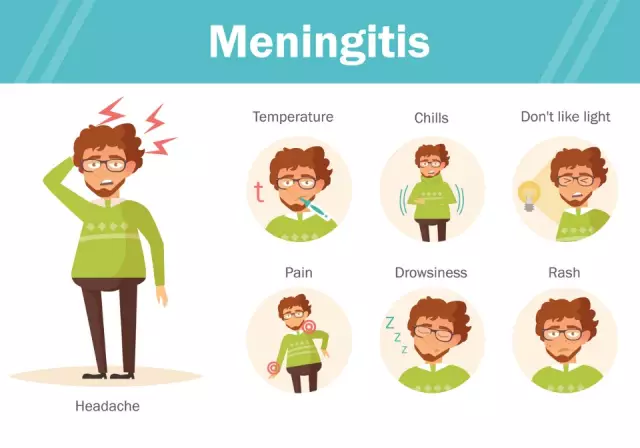- Author Curtis Blomfield [email protected].
- Public 2023-12-16 20:44.
- Last modified 2025-01-23 17:01.
Conjunctivitis. This term in medicine refers to inflammation of the mucous membrane of the eyeball. Does the child's eye fester? Is there increased lacrimation? Are your eyelids swollen and red? Most likely, the cause is conjunctivitis.

A disease in which a child has a watery eye can be caused by a virus (this type of conjunctivitis often occurs against the background of acute respiratory infections, influenza and other colds). Another common pathogen is bacteria (staphylococcus, streptococcus, pneumococcus). Often the cause of conjunctivitis is an allergic reaction (for example, to plant pollen or animal hair and saliva) or a weakened immune system. Most often, the eye of a child fester precisely because of bacterial conjunctivitis. The disease can be identified by such signs as copious purulent discharge, gluing the baby's eyelids and forming yellow crusts when dried.

Infection with infectious conjunctivitis can occur in the womb. In addition, the baby can get an infection during the passage of the birth canal, soExpectant mothers should carefully monitor their he alth. If the eye of a child aged six months or older is festering, the cause is most likely insufficient care, poor hygiene, or contact with an infected person.
Regardless of how the child is infected, conjunctivitis definitely needs to be treated. However, do not try to do it yourself, be sure to show the baby to the optometrist. To get rid of the disease in which the child's eye fester, a complex treatment is needed, which includes a number of procedures. This includes regular rinsing of the eyes with tea, chamomile solution or furatsilin, as well as the use of special eye drops with a calming effect. In especially severe cases, the doctor may prescribe special antibacterial ointments (they are usually placed behind the baby's eyelid) or antibiotics. It should be emphasized that if pus is released from only one eye, both should still be treated, because the infection is very easily transmitted.

The cause of a child's eye festering can be a disease such as dacryocystitis. It is characterized by an inflammatory process in the lacrimal sac and is characteristic of children who, for some reason, did not open the lacrimal canal at birth (passing through it, tears wash away microorganisms, but if this does not happen, bacteria accumulate in the corner of the eye and provoke suppuration). Often, the inflammatory process is caused by a gelatinous plug that clogs the tear duct.
In order to cure dacryocystitis, regulareye washing and lacrimal canal massage. For washing, you can use ordinary tea leaves and chamomile tea - this is enough to kill germs. Massage consists in doing six to ten pressure several times a day in the direction from the outer corner of the eye to the inner. In this case, a small amount of pus should be released from the palpebral fissure. If it doesn't, you are doing something wrong. After each procedure, the eyeball must be thoroughly washed. As a rule, after a couple of weeks, the symptoms completely disappear.






